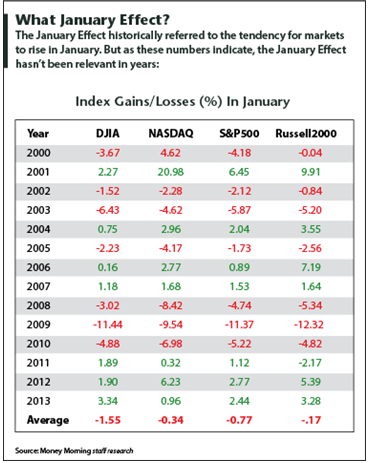Millions of soccer fans around the world await the most important global sporting event, the 2014 FIFA World Cup. Many media outlets have already started to hype different stocks, as well as statistics about the event. This brings about a question for us traders: Who is going to win and how can we profit? As technical traders, who study and trade from the charts, we are one step ahead of the news, and possibly even the game! With that in mind, let's look to the iShares MSCI Brazil Index (ETF) (NYSEARCA:EWZ) to help us pick the winning nation by analyzing the chart.

We can clearly see the iShares MSCI Brazil Index (ETF)(NYSEARCA:EWZ) is retesting a major trendline break out, with the 200-day moving average just below the trendline. This could serve as minor short-term support. However, the chart has begun to consolidate right at the line, without getting any significant bounce, as of now. The longer the price remains around this level, the more likely the iShares MSCI Brazil Index (ETF)(NYSEARCA:EWZ) is to break down.
If this trendline is broken the iShares MSCI Brazil Index (ETF)(NYSEARCA:EWZ) will fall quickly. A major support level where the shares will find buyers is $42.49.
If the level mentioned ($42.49) happens to be hit towards the end of the World Cup, and Brazil is still in the tournament, then the EWZ will rally (among other factors) in part as a result of Brazil winning the 2014 FIFA World Cup from this level of support.
That is my prediction based on the charts. Please feel free to comment and make your own predictions. Let us know if another chart is telling you who will win the 2014 FIFA World Cup! I would love to hear your thoughts, feel free to comment on our google+ page, our facebook fan page or tweet at me. Kiliam Lopez
InTheMoneyStocks
| Currently 0.00/512345 Rating: 0.0/5 (0 votes) | |

Subscribe via Email

Subscribe RSS Comments Please leave your comment:
More GuruFocus Links
| Latest Guru Picks | Value Strategies |
| Warren Buffett Portfolio | Ben Graham Net-Net |
| Real Time Picks | Buffett-Munger Screener |
| Aggregated Portfolio | Undervalued Predictable |
| ETFs, Options | Low P/S Companies |
| Insider Trends | 10-Year Financials |
| 52-Week Lows | Interactive Charts |
| Model Portfolios | DCF Calculator |
RSS Feed  | Monthly Newsletters |
| The All-In-One Screener | Portfolio Tracking Tool |

MORE GURUFOCUS LINKS
| Latest Guru Picks | Value Strategies |
| Warren Buffett Portfolio | Ben Graham Net-Net |
| Real Time Picks | Buffett-Munger Screener |
| Aggregated Portfolio | Undervalued Predictable |
| ETFs, Options | Low P/S Companies |
| Insider Trends | 10-Year Financials |
| 52-Week Lows | Interactive Charts |
| Model Portfolios | DCF Calculator |
RSS Feed  | Monthly Newsletters |
| The All-In-One Screener | Portfolio Tracking Tool |
EWZ STOCK PRICE CHART

47.82 (1y: -3%) $(function(){var seriesOptions=[],yAxisOptions=[],name='EWZ',display='';Highcharts.setOptions({global:{useUTC:true}});var d=new Date();$current_day=d.getDay();if($current_day==5||$current_day==0||$current_day==6){day=4;}else{day=7;} seriesOptions[0]={id:name,animation:false,color:'#4572A7',lineWidth:1,name:name.toUpperCase()+' stock price',threshold:null,data:[[1370840400000,49.19],[1370926800000,48.23],[1371013200000,47.29],[1371099600000,48.27],[1371186000000,47.63],[1371358800000,47.63],[1371531600000,47.09],[1371618000000,45.39],[1371704400000,43.94],[1371790800000,43.94],[1372050000000,43.07],[1372136400000,43.77],[1372222800000,44.58],[1372309200000,44.29],[1372395600000,43.86],[1372654800000,43.79],[1372741200000,42.33],[1372827600000,42.04],[1373000400000,41.47],[1373259600000,41.46],[1373346000000,41.97],[1373432400000,41.52],[1373518800000,42.94],[1373605200000,42.29],[1373864400000,43.48],[1373950800000,43.29],[1374037200000,43.99],[1374123600000,44.2],[1374210000000,43.72],[1374469200000,44.53],[1374555600000,45.16],[1374642000000,44.29],[1374728400000,44.76],[1374814800000,44.66],[1375074000000,44.2],[1375160400000,43.67],[1375246800000,43.5],[1375333200000,43.89],[1375419600000,43.96],[1375678800000,43.29],[1375765200000,42.78],[1375851600000,42.46],[1375938000000,43.82],[1376024400000,44.61],[1376283600000,44.7],[1376370000000,44.42],[1376456400000,44.13],[1376542800000,43.95],[1376629200000,43.14],[1376888400000,42.49],[1376974800000,42.12],[1377061200000,41.26],[1377147600000,41.96],[1377234000000,43.78],[1377493200000,43.04],[1377579600000,42.5],[1377666000000,42.42],[1377752400000,42.36],[1377838800000,42.39],[1378098000000,42.39],[1378184400000,42.92],[1378270800000,43.22],[1378357200000,44.26],[1378443600000,45.29],[1378702800000,46.93],[1378789200000,47.03],[1378875600000,46.81],[1378962000000,46.27],[1379048400000,46.67],[1379307600000,46.73],[1379394000000,47.32],[1379480400000,49.72],[1379566800000,49.55],[1379653200000,48.52],[1379912400000,49],[1379998800000,48.94],[1380085200000,48.25],[1380171600000,48.2],[1380258000000,47.94],[1380517200000,47.91],[1380603600000,48.37],[1380690000000,48.89],[1380776400000,48.4],[1380862800000,48.53],[1381122000000,48.52],[1381208400000,48.21],[1381294800000,48.46],[1381! 381200000,49.35],[1381467600000,49.77],[1381726800000,50.44],[1381813200000,50.07],[1381899600000,50.5],[1381986000000,50.9],[1382072400000,50.7],[1382331600000,51.02],[1382418000000,51.61],[1382504400000,50.37],[1382590800000,49.99],[1382677200000,50.24],[1382936400000,50.94],[1383022800000,50.97],[1383109200000,50.93],[1383195600000,50.16],[1383282000000,49.62],[1383544800000,50.02],[1383631200000,48.59],[1383717600000,48.59],[1383804000000,47.32],[1383890400000,47.02],[1384149600000,46.95],[1384236000000,46.34],[1384322400000,46.92],[1384408800000,47.96],[1384495200000,48.6],[1384754400000,49.28],[1384840800000,48.39],[1384927200000,47.6],[1385013600000,47.44],[1385100000000,48.13],[1385359200000,47.46],[1385445600000,47.07],[1385532000000,46.5],[1385704800000,46.95],[1385964000000,45.33],[1386050400000,44.72],[1386136800000,44.51],[1386223200000,44.62],[1386309600000,45.22],[1386568800000,45.52],[1386655200000,45.67],[1386741600000,44.26],[1386828000000,44.46],[1386914400000,44.34],[1387173600000,44.48],[1387260000000,44.54],[1387346400000,44.69],[1387432800000,44.06],[1387519200000,43.41],[1387778400000,44.1],[1387864800000,44.35],[1388037600000,43.98],[1388124000000,44.69],[1388383200000,44.37],[1388469600000,44.68],[1388642400000,43.19],[1388728800000,43.43],[1388988000000,42.92],[1389074400000,42.92],[1389160800000,42.51],[1389247200000,41.98],[1389333600000,42.69],[1389592800000,42.25],[1389679200000,42.66],[1389765600000,42.66],[1389852000000,42.38],[1389938400000,42.21],[1390284000000,41.76],[1390370400000,42.25],[1390456800000,41.19],[1390543200000,39.97],[1390802400000,39.99],[1390888800000,40.05],[1390975200000,39.21],[1391061600000,39.64],[1391148000000,39.28],[1391407200000,38.16],[1391493600000,39.31],[1391580000000,39.07],[1391666400000,40.4],[1391752800000,40.65],[1392012000000,39.94],[1392098400000,40.76],[1392184800000,39.96],[1392271200000,40.57],[1392357600000,40.73],[1392616800000,40.64],[1392703200000,39.55],[1392789600000,39.73],[1392876000000,40.28],[1392962400000,40.82],[1393! 221600000! ,40.83],[1393308000000,40.36],[1393394400000,40.33],[1393480800000,41.63],[1393567200000,41],[1393826400000,39.95],[1393912800000,40.57],[1393999200000,40.83],[1394085600000,41.28],[1394172000000,40.32],[1394427600000,39.63],[1394514000000,39.38],[1394600400000,39.68],[1394686800000,39.22],[1394773200000,39.11],[1395032400000,39.41],[1395118800000,40.37],[1395205200000,40.53],[1395291600000,41.48],[1395378000000,41.67],[1395637200000,42.16],[1395723600000,42.68],[1395810000000,42.52],[1395896400000,44.49],[1395982800000,44.87],[1396242000000,45.04],[1396328400000,45.15],[1396414800000,46.24],[1396501200000,45.68],[1396587600000,46.15],[1396846800000,47.39],[1396933200000,47.29],[1397019600000,47.15],[1397106000000,46.92],[1397192

 Bloomberg News
Bloomberg News 






 ) senior manager Brian Jorgenson was charged with insider trading on Thursday.
) senior manager Brian Jorgenson was charged with insider trading on Thursday.  Getty Images
Getty Images  Office holiday party fiascos (Money Magazine) Wouldn't it be nice to have a friend at the top of the corporate ladder? Mark your calendar for the office holiday party, your annual chance at cocktail chatter with company brass.
Office holiday party fiascos (Money Magazine) Wouldn't it be nice to have a friend at the top of the corporate ladder? Mark your calendar for the office holiday party, your annual chance at cocktail chatter with company brass.  Who's getting hired and what does it pay?
Who's getting hired and what does it pay?  Shutterstock/Monkey Business Images Thanks to the falling price of turkey and other staples, the average cost of a Thanksgiving dinner for 10 people has fallen to $49.04 this year, down 44 cents from 2012, according to a survey by the American Farm Bureau Federation. At just $4.90 per person, that's quite a bargain. But that figure sticks to a fairly traditional dinner, and these days, holiday dining often strays happily from the traditional. So let's check out a few ways you could save some money on your Thanksgiving feast. Turn the Menu Upside Down Rather than planning a traditional menu and buying all the ingredients, start with what's already in your pantry, says Coryanne Ettiene, a cooking show host and mother of three. "By incorporating elements from your kitchen ingredients, you spend less at the checkout and less time at the grocery store, and this time of year saving both time and money means more time for enjoying the holiday season." Planning a menu around what's already in-house has another key advantage: It means you avoid getting roped into buying a slew of ingredients by the bunch, box or bottle, only to use one or two servings. When meal-planning, skip dishes that have an unusual ingredient or call for a pinch of something not already handy. Don't overlook the obvious; many stores offer a free turkey promotion to customers who spend a certain amount. Plan Ahead Since last-minute shopping can be an enormous strain on both budgets and stress levels, plan ahead -- not just for Thanksgiving, but for the next set of special holiday meals, too. "When shopping for Thanksgiving," says Ettiene, "consider your Christmas menu, as well. For example, buying fresh herbs in bulk and freezing or drying the leftovers allows you to save more money when you return to the grocery store to shop for your Christmas menu." Jeanette Pavini, a consumer savings expert at Coupons.com, offers this advice: "When looking to buy fruits and vegetables for holiday events," she says, "look to frozen produce when you can. You're also more likely to find manufacturer coupons for frozen produce." This year, Thanksgiving also falls on the first night of Hanukkah. Incorporating potato pancakes, leek or cauliflower latkes, and other traditional dishes can add a twist to the typical Thanksgiving dinner -- and keep your finances in check. Partner Up Pavini also recommends asking friends and family to bring a dish for the meal. "Usually they're more than willing to do so," she says, "and it can help you stretch your budget." While it's not uncommon for a host to cook the turkey and ask friends to bring sides, without good planning, that can result in six different types of mashed potatoes making their way to the table. To share the weight of Thanksgiving a little more strategically, partner with another family to plan, buy, cook and share the holiday dinner, and ask everyone else to bring a dessert. (Because there's no such thing as too much pie.) Or you can have an open-table-style Thanksgiving dinner with a community organization, church group, or colleagues in a rented space. Buy in bulk, share the cooking and cleanup, and donate the leftovers to a nearby shelter or soup kitchen. A Flash in the Pan Thanksgiving dinner might be just one meal on one day, but it has the power to overwhelm the week's -- or even the month's -- grocery budget. However, with savvy planning and some strategic freezing, the leftovers and extra ingredients might even make it until New Year's. A wide variety of resources can help make planning and budgeting for Thanksgiving easier, such as grocery store apps like Whole Foods, recipe websites like Ziplist, and online budgeting classics like Mint.
Shutterstock/Monkey Business Images Thanks to the falling price of turkey and other staples, the average cost of a Thanksgiving dinner for 10 people has fallen to $49.04 this year, down 44 cents from 2012, according to a survey by the American Farm Bureau Federation. At just $4.90 per person, that's quite a bargain. But that figure sticks to a fairly traditional dinner, and these days, holiday dining often strays happily from the traditional. So let's check out a few ways you could save some money on your Thanksgiving feast. Turn the Menu Upside Down Rather than planning a traditional menu and buying all the ingredients, start with what's already in your pantry, says Coryanne Ettiene, a cooking show host and mother of three. "By incorporating elements from your kitchen ingredients, you spend less at the checkout and less time at the grocery store, and this time of year saving both time and money means more time for enjoying the holiday season." Planning a menu around what's already in-house has another key advantage: It means you avoid getting roped into buying a slew of ingredients by the bunch, box or bottle, only to use one or two servings. When meal-planning, skip dishes that have an unusual ingredient or call for a pinch of something not already handy. Don't overlook the obvious; many stores offer a free turkey promotion to customers who spend a certain amount. Plan Ahead Since last-minute shopping can be an enormous strain on both budgets and stress levels, plan ahead -- not just for Thanksgiving, but for the next set of special holiday meals, too. "When shopping for Thanksgiving," says Ettiene, "consider your Christmas menu, as well. For example, buying fresh herbs in bulk and freezing or drying the leftovers allows you to save more money when you return to the grocery store to shop for your Christmas menu." Jeanette Pavini, a consumer savings expert at Coupons.com, offers this advice: "When looking to buy fruits and vegetables for holiday events," she says, "look to frozen produce when you can. You're also more likely to find manufacturer coupons for frozen produce." This year, Thanksgiving also falls on the first night of Hanukkah. Incorporating potato pancakes, leek or cauliflower latkes, and other traditional dishes can add a twist to the typical Thanksgiving dinner -- and keep your finances in check. Partner Up Pavini also recommends asking friends and family to bring a dish for the meal. "Usually they're more than willing to do so," she says, "and it can help you stretch your budget." While it's not uncommon for a host to cook the turkey and ask friends to bring sides, without good planning, that can result in six different types of mashed potatoes making their way to the table. To share the weight of Thanksgiving a little more strategically, partner with another family to plan, buy, cook and share the holiday dinner, and ask everyone else to bring a dessert. (Because there's no such thing as too much pie.) Or you can have an open-table-style Thanksgiving dinner with a community organization, church group, or colleagues in a rented space. Buy in bulk, share the cooking and cleanup, and donate the leftovers to a nearby shelter or soup kitchen. A Flash in the Pan Thanksgiving dinner might be just one meal on one day, but it has the power to overwhelm the week's -- or even the month's -- grocery budget. However, with savvy planning and some strategic freezing, the leftovers and extra ingredients might even make it until New Year's. A wide variety of resources can help make planning and budgeting for Thanksgiving easier, such as grocery store apps like Whole Foods, recipe websites like Ziplist, and online budgeting classics like Mint.


 MORE GURUFOCUS LINKS
MORE GURUFOCUS LINKS  47.82 (1y: -3%) $(function(){var seriesOptions=[],yAxisOptions=[],name='EWZ',display='';Highcharts.setOptions({global:{useUTC:true}});var d=new Date();$current_day=d.getDay();if($current_day==5||$current_day==0||$current_day==6){day=4;}else{day=7;} seriesOptions[0]={id:name,animation:false,color:'#4572A7',lineWidth:1,name:name.toUpperCase()+' stock price',threshold:null,data:[[1370840400000,49.19],[1370926800000,48.23],[1371013200000,47.29],[1371099600000,48.27],[1371186000000,47.63],[1371358800000,47.63],[1371531600000,47.09],[1371618000000,45.39],[1371704400000,43.94],[1371790800000,43.94],[1372050000000,43.07],[1372136400000,43.77],[1372222800000,44.58],[1372309200000,44.29],[1372395600000,43.86],[1372654800000,43.79],[1372741200000,42.33],[1372827600000,42.04],[1373000400000,41.47],[1373259600000,41.46],[1373346000000,41.97],[1373432400000,41.52],[1373518800000,42.94],[1373605200000,42.29],[1373864400000,43.48],[1373950800000,43.29],[1374037200000,43.99],[1374123600000,44.2],[1374210000000,43.72],[1374469200000,44.53],[1374555600000,45.16],[1374642000000,44.29],[1374728400000,44.76],[1374814800000,44.66],[1375074000000,44.2],[1375160400000,43.67],[1375246800000,43.5],[1375333200000,43.89],[1375419600000,43.96],[1375678800000,43.29],[1375765200000,42.78],[1375851600000,42.46],[1375938000000,43.82],[1376024400000,44.61],[1376283600000,44.7],[1376370000000,44.42],[1376456400000,44.13],[1376542800000,43.95],[1376629200000,43.14],[1376888400000,42.49],[1376974800000,42.12],[1377061200000,41.26],[1377147600000,41.96],[1377234000000,43.78],[1377493200000,43.04],[1377579600000,42.5],[1377666000000,42.42],[1377752400000,42.36],[1377838800000,42.39],[1378098000000,42.39],[1378184400000,42.92],[1378270800000,43.22],[1378357200000,44.26],[1378443600000,45.29],[1378702800000,46.93],[1378789200000,47.03],[1378875600000,46.81],[1378962000000,46.27],[1379048400000,46.67],[1379307600000,46.73],[1379394000000,47.32],[1379480400000,49.72],[1379566800000,49.55],[1379653200000,48.52],[1379912400000,49],[1379998800000,48.94],[1380085200000,48.25],[1380171600000,48.2],[1380258000000,47.94],[1380517200000,47.91],[1380603600000,48.37],[1380690000000,48.89],[1380776400000,48.4],[1380862800000,48.53],[1381122000000,48.52],[1381208400000,48.21],[1381294800000,48.46],[1381! 381200000,49.35],[1381467600000,49.77],[1381726800000,50.44],[1381813200000,50.07],[1381899600000,50.5],[1381986000000,50.9],[1382072400000,50.7],[1382331600000,51.02],[1382418000000,51.61],[1382504400000,50.37],[1382590800000,49.99],[1382677200000,50.24],[1382936400000,50.94],[1383022800000,50.97],[1383109200000,50.93],[1383195600000,50.16],[1383282000000,49.62],[1383544800000,50.02],[1383631200000,48.59],[1383717600000,48.59],[1383804000000,47.32],[1383890400000,47.02],[1384149600000,46.95],[1384236000000,46.34],[1384322400000,46.92],[1384408800000,47.96],[1384495200000,48.6],[1384754400000,49.28],[1384840800000,48.39],[1384927200000,47.6],[1385013600000,47.44],[1385100000000,48.13],[1385359200000,47.46],[1385445600000,47.07],[1385532000000,46.5],[1385704800000,46.95],[1385964000000,45.33],[1386050400000,44.72],[1386136800000,44.51],[1386223200000,44.62],[1386309600000,45.22],[1386568800000,45.52],[1386655200000,45.67],[1386741600000,44.26],[1386828000000,44.46],[1386914400000,44.34],[1387173600000,44.48],[1387260000000,44.54],[1387346400000,44.69],[1387432800000,44.06],[1387519200000,43.41],[1387778400000,44.1],[1387864800000,44.35],[1388037600000,43.98],[1388124000000,44.69],[1388383200000,44.37],[1388469600000,44.68],[1388642400000,43.19],[1388728800000,43.43],[1388988000000,42.92],[1389074400000,42.92],[1389160800000,42.51],[1389247200000,41.98],[1389333600000,42.69],[1389592800000,42.25],[1389679200000,42.66],[1389765600000,42.66],[1389852000000,42.38],[1389938400000,42.21],[1390284000000,41.76],[1390370400000,42.25],[1390456800000,41.19],[1390543200000,39.97],[1390802400000,39.99],[1390888800000,40.05],[1390975200000,39.21],[1391061600000,39.64],[1391148000000,39.28],[1391407200000,38.16],[1391493600000,39.31],[1391580000000,39.07],[1391666400000,40.4],[1391752800000,40.65],[1392012000000,39.94],[1392098400000,40.76],[1392184800000,39.96],[1392271200000,40.57],[1392357600000,40.73],[1392616800000,40.64],[1392703200000,39.55],[1392789600000,39.73],[1392876000000,40.28],[1392962400000,40.82],[1393! 221600000! ,40.83],[1393308000000,40.36],[1393394400000,40.33],[1393480800000,41.63],[1393567200000,41],[1393826400000,39.95],[1393912800000,40.57],[1393999200000,40.83],[1394085600000,41.28],[1394172000000,40.32],[1394427600000,39.63],[1394514000000,39.38],[1394600400000,39.68],[1394686800000,39.22],[1394773200000,39.11],[1395032400000,39.41],[1395118800000,40.37],[1395205200000,40.53],[1395291600000,41.48],[1395378000000,41.67],[1395637200000,42.16],[1395723600000,42.68],[1395810000000,42.52],[1395896400000,44.49],[1395982800000,44.87],[1396242000000,45.04],[1396328400000,45.15],[1396414800000,46.24],[1396501200000,45.68],[1396587600000,46.15],[1396846800000,47.39],[1396933200000,47.29],[1397019600000,47.15],[1397106000000,46.92],[1397192
47.82 (1y: -3%) $(function(){var seriesOptions=[],yAxisOptions=[],name='EWZ',display='';Highcharts.setOptions({global:{useUTC:true}});var d=new Date();$current_day=d.getDay();if($current_day==5||$current_day==0||$current_day==6){day=4;}else{day=7;} seriesOptions[0]={id:name,animation:false,color:'#4572A7',lineWidth:1,name:name.toUpperCase()+' stock price',threshold:null,data:[[1370840400000,49.19],[1370926800000,48.23],[1371013200000,47.29],[1371099600000,48.27],[1371186000000,47.63],[1371358800000,47.63],[1371531600000,47.09],[1371618000000,45.39],[1371704400000,43.94],[1371790800000,43.94],[1372050000000,43.07],[1372136400000,43.77],[1372222800000,44.58],[1372309200000,44.29],[1372395600000,43.86],[1372654800000,43.79],[1372741200000,42.33],[1372827600000,42.04],[1373000400000,41.47],[1373259600000,41.46],[1373346000000,41.97],[1373432400000,41.52],[1373518800000,42.94],[1373605200000,42.29],[1373864400000,43.48],[1373950800000,43.29],[1374037200000,43.99],[1374123600000,44.2],[1374210000000,43.72],[1374469200000,44.53],[1374555600000,45.16],[1374642000000,44.29],[1374728400000,44.76],[1374814800000,44.66],[1375074000000,44.2],[1375160400000,43.67],[1375246800000,43.5],[1375333200000,43.89],[1375419600000,43.96],[1375678800000,43.29],[1375765200000,42.78],[1375851600000,42.46],[1375938000000,43.82],[1376024400000,44.61],[1376283600000,44.7],[1376370000000,44.42],[1376456400000,44.13],[1376542800000,43.95],[1376629200000,43.14],[1376888400000,42.49],[1376974800000,42.12],[1377061200000,41.26],[1377147600000,41.96],[1377234000000,43.78],[1377493200000,43.04],[1377579600000,42.5],[1377666000000,42.42],[1377752400000,42.36],[1377838800000,42.39],[1378098000000,42.39],[1378184400000,42.92],[1378270800000,43.22],[1378357200000,44.26],[1378443600000,45.29],[1378702800000,46.93],[1378789200000,47.03],[1378875600000,46.81],[1378962000000,46.27],[1379048400000,46.67],[1379307600000,46.73],[1379394000000,47.32],[1379480400000,49.72],[1379566800000,49.55],[1379653200000,48.52],[1379912400000,49],[1379998800000,48.94],[1380085200000,48.25],[1380171600000,48.2],[1380258000000,47.94],[1380517200000,47.91],[1380603600000,48.37],[1380690000000,48.89],[1380776400000,48.4],[1380862800000,48.53],[1381122000000,48.52],[1381208400000,48.21],[1381294800000,48.46],[1381! 381200000,49.35],[1381467600000,49.77],[1381726800000,50.44],[1381813200000,50.07],[1381899600000,50.5],[1381986000000,50.9],[1382072400000,50.7],[1382331600000,51.02],[1382418000000,51.61],[1382504400000,50.37],[1382590800000,49.99],[1382677200000,50.24],[1382936400000,50.94],[1383022800000,50.97],[1383109200000,50.93],[1383195600000,50.16],[1383282000000,49.62],[1383544800000,50.02],[1383631200000,48.59],[1383717600000,48.59],[1383804000000,47.32],[1383890400000,47.02],[1384149600000,46.95],[1384236000000,46.34],[1384322400000,46.92],[1384408800000,47.96],[1384495200000,48.6],[1384754400000,49.28],[1384840800000,48.39],[1384927200000,47.6],[1385013600000,47.44],[1385100000000,48.13],[1385359200000,47.46],[1385445600000,47.07],[1385532000000,46.5],[1385704800000,46.95],[1385964000000,45.33],[1386050400000,44.72],[1386136800000,44.51],[1386223200000,44.62],[1386309600000,45.22],[1386568800000,45.52],[1386655200000,45.67],[1386741600000,44.26],[1386828000000,44.46],[1386914400000,44.34],[1387173600000,44.48],[1387260000000,44.54],[1387346400000,44.69],[1387432800000,44.06],[1387519200000,43.41],[1387778400000,44.1],[1387864800000,44.35],[1388037600000,43.98],[1388124000000,44.69],[1388383200000,44.37],[1388469600000,44.68],[1388642400000,43.19],[1388728800000,43.43],[1388988000000,42.92],[1389074400000,42.92],[1389160800000,42.51],[1389247200000,41.98],[1389333600000,42.69],[1389592800000,42.25],[1389679200000,42.66],[1389765600000,42.66],[1389852000000,42.38],[1389938400000,42.21],[1390284000000,41.76],[1390370400000,42.25],[1390456800000,41.19],[1390543200000,39.97],[1390802400000,39.99],[1390888800000,40.05],[1390975200000,39.21],[1391061600000,39.64],[1391148000000,39.28],[1391407200000,38.16],[1391493600000,39.31],[1391580000000,39.07],[1391666400000,40.4],[1391752800000,40.65],[1392012000000,39.94],[1392098400000,40.76],[1392184800000,39.96],[1392271200000,40.57],[1392357600000,40.73],[1392616800000,40.64],[1392703200000,39.55],[1392789600000,39.73],[1392876000000,40.28],[1392962400000,40.82],[1393! 221600000! ,40.83],[1393308000000,40.36],[1393394400000,40.33],[1393480800000,41.63],[1393567200000,41],[1393826400000,39.95],[1393912800000,40.57],[1393999200000,40.83],[1394085600000,41.28],[1394172000000,40.32],[1394427600000,39.63],[1394514000000,39.38],[1394600400000,39.68],[1394686800000,39.22],[1394773200000,39.11],[1395032400000,39.41],[1395118800000,40.37],[1395205200000,40.53],[1395291600000,41.48],[1395378000000,41.67],[1395637200000,42.16],[1395723600000,42.68],[1395810000000,42.52],[1395896400000,44.49],[1395982800000,44.87],[1396242000000,45.04],[1396328400000,45.15],[1396414800000,46.24],[1396501200000,45.68],[1396587600000,46.15],[1396846800000,47.39],[1396933200000,47.29],[1397019600000,47.15],[1397106000000,46.92],[1397192